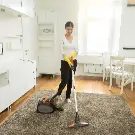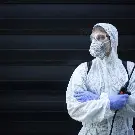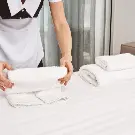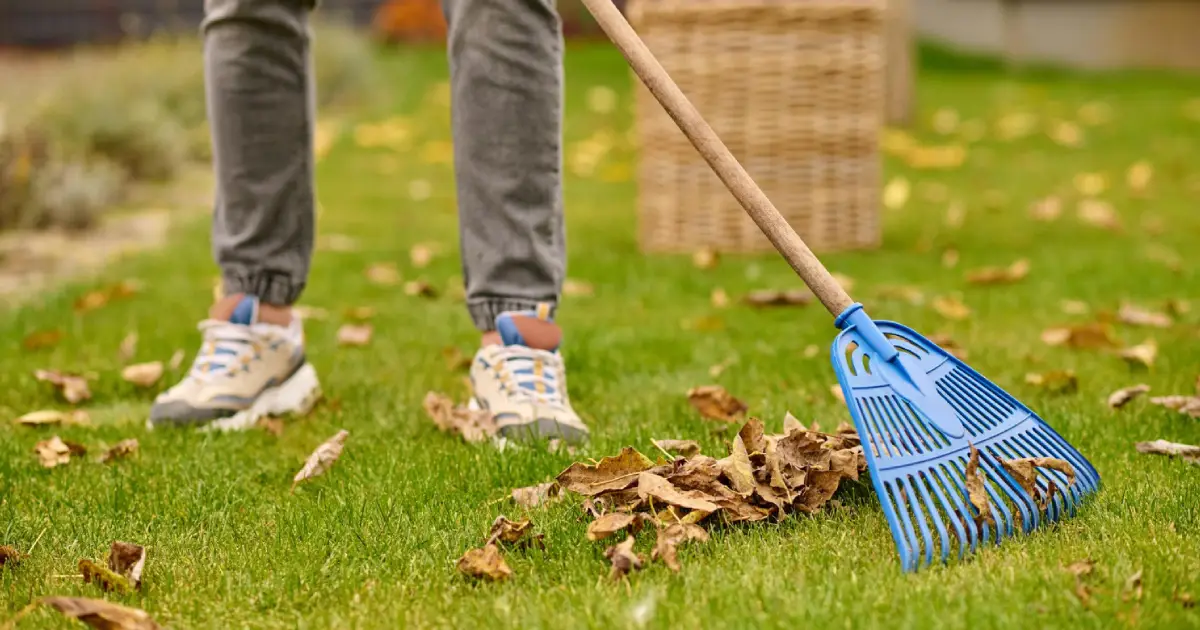
As the temperatures drop and the snow starts to fall, it's important to prioritize winter cleaning. While spring cleaning frequently receives all the attention, winter cleaning is just as important to keep a home comfortable and healthy during the year’s colder months. When it comes to cleanliness, winter presents a totally different set of difficulties. Dust, allergies, and bacteria will undoubtedly accumulate in your home due to the cold weather and the extra time spent indoors. A clean and welcoming environment is even more crucial now that the Christmas season is approaching and your home might host more visitors than normal. Moreover, winter cleaning allows you to identify and address any maintenance issues before they worsen. Cold weather can exacerbate problems such as leaks, drafts, and insulation issues. By thoroughly inspecting and maintaining your home, you can ensure that it remains energy-efficient, comfortable, and protected against harsh winter conditions.
A winter cleaning checklist is a detailed compilation of cleaning and organizing tasks designed specifically for the winter season. Its purpose is to guide in completing all the necessary cleaning and maintenance duties, ensuring a clean, warm, and well-maintained home during the colder months. This checklist offers numerous advantages, including structure, time management, thorough cleaning, efficiency, accountability, and motivation. It assists in staying organized, prioritizing tasks, and ensuring that no areas are overlooked. By adhering to the checklist, you can work efficiently, reduce stress, and achieve a meticulous cleaning outcome. Furthermore, the checklist helps address maintenance and preventive tasks, guaranteeing a comfortable and well-kept home throughout winter.
Preparing for Winter Cleaning
Preparing for winter cleaning involves creating a checklist of tasks, gathering the necessary supplies, scheduling dedicated cleaning time, considering assistance if needed, organizing storage spaces, researching maintenance tasks, creating a cleaning schedule, and dressing appropriately. By following these steps, you'll be well-prepared to tackle your winter cleaning efficiently and ensure a clean and well-maintained home throughout the season.
Gathering necessary cleaning supplies
Start by making an inventory of your current cleaning supplies before gathering the ones you will need for your winter cleaning. Consider the specific chores and areas you will be cleaning when creating a shopping list of any materials that are limited or missing. Make sure you have the essentials, like gloves, sponges, scrub brushes, microfiber towels, and rubbish bags. Look for environmentally responsible solutions and seasonally appropriate items like ice melt, boot trays, and doormats. Do not forget to inspect the equipment, including your vacuum cleaner. Last but not least, put safety first by wearing personal protective gear like gloves and masks. The correct tools will enable you to complete your winter cleaning tasks quickly and successfully.
Setting aside dedicated time for cleaning
Setting aside dedicated time for winter cleaning is essential for effectively managing the tasks at hand. To do this, assess the extent of cleaning required, prioritize tasks, and create a schedule that allocates specific time slots for each task. Break down the cleaning process into manageable chunks and consider your energy levels when scheduling cleaning sessions. Minimize distractions, take breaks to rest and recharge, and enlist the help of family members or housemates if available. By following these tips, you can ensure that you have focused and uninterrupted time to complete your winter cleaning tasks efficiently and without feeling overwhelmed.
Enlisting help from family members or hiring professionals, if needed
Enlisting help from family members or hiring professional house cleaners is an ideal strategy for managing and completing winter cleaning tasks effectively. By assessing the workload and delegating specific tasks to family members or housemates, you can distribute the cleaning responsibilities and make the process more manageable. Hiring professional cleaners can bring expertise, efficiency, and convenience to tackle more extensive cleaning projects. Clear communication, setting expectations, and coordinating schedules are essential when enlisting help. Whether through family members or professionals, seeking assistance can significantly alleviate the workload and ensure a thorough and efficient winter cleaning process.
An Ideal Winter Cleaning Checklist
The ideal winter cleaning checklist would include chores like organising, deep cleaning carpets, dusting, cleaning windows, cleaning the kitchen and bathroom, maintaining the HVAC system, weatherproofing, outdoor cleaning, and getting ready for holiday decorations. You can make sure that your house is tidy and organized during the winter by using this checklist. Create a checklist that is specific to your needs and order the tasks according to what is needed for your home. The completion of these key cleaning tasks will help to create a cosy and delightful living space throughout the winter months.
Cleaning the Living Spaces
To maintain a thoroughly clean environment, cleaning the living areas consists of different significant activities. You can make sure that your living areas are clear of allergens, dust, and grime by diligently carrying out these cleaning tasks as part of your winter cleaning. This thorough cleaning routine will not only create a welcoming and fresh atmosphere, but will also support preserving the longevity and aesthetic appeal of your furniture, windows, and other surfaces.
Dusting and vacuuming all surfaces
Use a microfiber cloth or duster to dust every piece of furniture, shelf, and electronic device. Pay close attention to confined spaces and make sure all dust is removed. To get rid of debris, filth, and pet hair, vacuum upholstered furniture, such as couches and chairs. Make sure you use the proper attachment. To efficiently remove dirt and allergens, vacuuming is necessary for floors, carpets, and rugs too.
Cleaning windows and window sills
Windows should be cleaned from the inside and outside using glass cleaner and a lint-free cloth. A microfibre cloth will do best. To prevent streaks, wipe the glass in a circular motion or with vertical and horizontal strokes. To get rid of accumulated dust, dirt, and grime, do not forget to clean the window sills, frames, and the window tracks.
Deep cleaning carpets and rugs
Deep cleaning of carpets and rugs can help get rid of stubborn stains, odours, and dirt. You can use a carpet cleaner with appropriate solutions or look into hiring professional carpet cleaners for a more comprehensive and efficient job, depending on the material and level of cleaning necessary. Observe the guidelines that the manufacturer or cleaning service has provided before you do anything.
Washing curtains or blinds
Curtains should be cleaned in accordance with their specific care directions. Remove them if you can, then wash them by hand or in the washing machine. To clean dust and stains off of blinds, use a moist cloth or a commercial blind cleaner. Before rehanging the drapes, make sure they are thoroughly dry.
Wiping down walls and baseboards
Walls and baseboards can be cleaned by scrubbing them with a mild cleaning solution and a soft cloth or sponge. Keep an eye out for spots where dust, fingerprints, or smudges like to collect. This task helps maintain a clean and fresh appearance throughout the living spaces.
Kitchen and Dining Areas
The kitchen and dining spaces need to be cleaned and maintained regularly not just to maintain a hygienic atmosphere but also to ensure optimum functionality and a pleasant experience. You can create a tidy, functional kitchen and dining space that encourages a wholesome and enjoyable dining experience by regularly putting the following cleaning and maintenance techniques into practice.
Cleaning and organizing the pantry
Remove everything from the pantry, inspect each item for its freshness, throw away any food that has expired or is showing signs of going bad, and then clean the shelves and organizers with a moist towel or a mild cleaning agent. For better arrangement, consider using containers or boxes.
Deep cleaning the refrigerator and freezer
To begin, remove shelves, drawers, and bins from your refrigerator and freezer and empty and discard any food that has become expired or undesired. Wash the removable parts with warm, soapy water, then clean the interior with water and mild detergent, paying close attention to spills and stains. If necessary, defrost and clean the freezer. Before reassembling, make sure everything is completely dry.
Scrubbing the oven and stovetop
Oven racks can be cleaned by soaking them in warm, soapy water. Use an oven cleaner or a solution of baking soda and water to clean the oven while adhering to the manufacturer's directions. Use an appropriate cleaner or vinegar and water solution to scrub the stoves, burners, and control knobs. To get rid of grease and residue, rinse and wipe off all surfaces.
Degreasing kitchen cabinets
Kitchen cabinets should be thoroughly cleaned, including the handles, corners, and decorative components, either with a commercial degreaser or a solution of dish soap and warm water. To avoid damage, wipe cabinets down with a moist towel and make sure they have completely dried before arranging items.
Descaling and cleaning coffee makers and kettles
Follow the manufacturer's recommendations when descaling and cleaning coffee makers and kettles. You can also use a solution meant for descaling or a solution made of equal parts vinegar and water. To get rid of odours and stuck-on residue, give the appliances a good rinse.
Sanitizing countertops and sinks
Sanitize countertops and sinks by wiping them with a disinfectant cleaner or a mixture of water and bleach. Pay attention to high-touch areas, such as handles and edges. Use a mild abrasive cleaner or baking soda to scrub sinks and remove stains or buildup, then rinse thoroughly and dry the surfaces.
Bedrooms and Bathrooms
To maintain a comfortable and hygienic living environment, bedrooms and bathrooms must be kept clean and orderly. Bedrooms act as our private getaways, places where we decompress from a stressful day and relax. The sense of peace that a tidy and well-organized bedroom fosters enables us to sleep soundly and awaken feeling rejuvenated. Similarly, sustaining personal hygiene and overall well-being depends on having toilets that are clean and well-organized. A bathroom is a place where we perform daily self-care activities like bathing, grooming, and using the restroom. In addition to improving our physical well-being, a tidy bathroom also helps us feel better mentally and emotionally.
Washing bedding and changing mattress covers
Remove all of the bedding, including the sheets, pillowcases, and duvet covers, and wash everything as directed by the manufacturer. Mattress covers should also be changed and cleaned. This promotes a clean and fresh sleeping environment by removing dust, allergens, and odours. You can also get your mattress cleaned by professional mattress cleaners.
Cleaning and organizing closets
Closets should be emptied of unwanted and unused items, and extra stuff should be cleared out. Inspect all storage organizers, rods, and shelves for accumulated dirt. Using a moist cloth or an appropriate cleaning agent, clean the surfaces. Increase space and accessibility by arranging your things systematically.
Dusting and wiping down surfaces in bedrooms
Use a microfiber cloth or duster to dust all surfaces, including furniture, nightstands, lamps, and picture frames. To eliminate any accumulated dust, use a moist cloth to wipe off surfaces. Pay attention to corners and difficult-to-reach spaces.
Deep cleaning bathroom fixtures and tiles
Bathroom fixtures like faucets, showerheads, and towel racks can be cleaned with a bathroom cleaner or vinegar and water solution. To get rid of grime and soap scum, scrub the tiles and grout lines with the appropriate cleaner. To avoid water stains, give everything a good rinse and then dry them.
Scrubbing toilets, sinks, and showers
To clean and sanitize the interior of toilets, use a toilet cleaner or a vinegar-baking soda solution. Clean the outside of the bowl, the seat, and the bowl. Use a suitable cleaner on the sinks and worktops, then scrub the showers and tubs to get rid of soap scum and grime. Rinse thoroughly to remove cleaner residue.
Disinfecting bathroom floors
To get rid of loose particles and dirt, sweep or vacuum the bathroom floors. To fully clean and sanitize the floors, use a mop and an efficient floor cleaner. Pay close attention to baseboards and corners. Make sure the floors are left dry and clean by frequently rinsing the mop.
Other Cleaning Considerations
There are several other cleaning tasks that need your attention during the winter season in addition to the routine cleaning activities. You can make sure that your living spaces remain tidy, cosy, and supportive of a healthy indoor environment by attending to these particular cleaning demands. These duties include maintaining clean and stain-free carpets, preventing the formation of mold and mildew, and ensuring the proper functioning of humidifiers and air purifiers for a comfortable and healthy indoor atmosphere throughout the winter.
Cleaning and maintaining winter gear
During the winter, clothing such as coats, boots, and gloves can gather moisture, salt, and filth. To increase their lifespan, it is essential to properly clean and maintain them. To clean each item, adhere to the manufacturer's cleaning guidelines. In general, spot cleaning with a gentle detergent, using a brush to remove debris, and allowing them to air dry completely before storage is all that is required.
Removing stains from carpets caused by winter slush
Salt and winter slush can create noticeable and unsightly stains on carpets and rugs. Before you start removing these stains, blot the affected area to eliminate excess moisture with a clean cloth or paper towel. Apply a carpet stain remover or a solution of water and vinegar to the spot after that, then use a clean cloth to gently blot away the dirt. Use clean water to rinse, then blot dry thoroughly.
Preventing mold and mildew growth during winter months
Winter weather often means higher levels of moisture, which can promote the growth of mold and mildew since the dampness makes for an ideal habitat for these to grow. Make sure your home has adequate ventilation by opening windows when you can and using exhaust fans to get rid of excess humidity. Monitor out for damp areas like bathrooms and basements, and take immediate action if you notice any symptoms of mold or mildew. Consider using dehumidifiers in locations with high humidity levels.
Cleaning and maintaining humidifiers and air purifiers
During the winter, people frequently use humidifiers and air purifiers to counteract dry air and enhance indoor air quality. To stop the growth of bacteria and mold, it is important to frequently clean and maintain this equipment. Adhere to the manufacturer's recommendations for filter cleaning and replacement. Replace filters or clean the purifier's parts as directed, and empty and clean the water tanks of humidifiers.
Safety Precautions To Keep In Mind
Prioritizing safety is of the utmost importance when undertaking winter cleaning duties. While performing your winter cleaning tasks, you can reduce health hazards and create a safer environment by taking the necessary safety precautions. During the cleaning process, keep in mind to put your health first and to take the essential precautions to make a space that is secure for you and other people. Safety comes first since it not only keeps you safe but also guarantees that all of your cleaning tasks go off without any trouble.
Using eco-friendly cleaning products
A wise and responsible cleaning strategy is to use eco-friendly cleaning supplies. Choose products that are environmentally friendly, biodegradable, and free of harsh chemicals. To make sure you are picking the proper goods, look for certifications and check product labels. Think about creating your own cleaning products using natural ingredients. You can protect your health, reduce your influence on the environment, and promote sustainable practices by using eco-friendly items.
Ensuring proper ventilation during cleaning
Maintaining a healthy home environment when cleaning requires proper airflow. To circulate fresh air and get rid of cleaning chemical fumes, airborne particles, and odours, open windows or make use of exhaust fans. This lessens the chance of respiratory problems while also enhancing indoor air quality. In order to maintain effective air circulation, make sure that the HVAC systems and air vents of your house are not clogged. Safety is further enhanced when using eco-friendly cleaning supplies and wearing the proper personal protection gear when cleaning.
Practising ladder safety when cleaning high areas
Ladder safety is a must while cleaning high surfaces, such as ceilings or tall furniture. Select a sturdy ladder and erect it in a secure place. When ascending or standing on the ladder, keep at least three points of contact with it, and avoid reaching too far. Never climb the ladder's top rung since it can be risky. In order to avoid accidents or falls, ask for assistance if necessary, and pay attention to your surroundings. You can ensure a safer cleaning experience when working at heights by adhering to these safety precautions.
Storing cleaning products safely
It is important to store cleaning supplies securely for the sake of safety. Use childproof locks or cabinets, keep products in their original containers with clear labelling, follow manufacturer's instructions, keep them out of the reach of children and pets, keep them in a secure location, and dispose of expired or unused products with caution. By taking these precautions, you can safeguard your family's safety and prevent accidents.
Be cautious with electrical appliances
To ensure safety while using electrical appliances for cleaning tasks, you must exercise utmost caution. You can minimize the possibility of electrical shocks or accidents when performing cleaning jobs by being cautious around electrical equipment, inspecting their condition before use, keeping them away from water, and adhering to all applicable safety standards. Setting electrical safety as a top priority will safeguard your family's safety and your own.
Conclusion
Maintaining a clean, cosy, and healthy living space throughout the colder months depends heavily on winter cleaning. By using a checklist, you can make sure that no area or duty is missed, which leads to a more streamlined and effective cleaning procedure. With a checklist in hand, you can approach each duty methodically and guarantee that every aspect of your house is taken care of. The transformation of your living area encourages a sense of success and fulfilment too. Utilizing the checklist will help you stay organized, properly manage your time, and guarantee that your winter cleaning is effective and thorough. If you are having trouble planning your winter cleaning, you can hire professional house cleaners who will create a customised checklist for you.
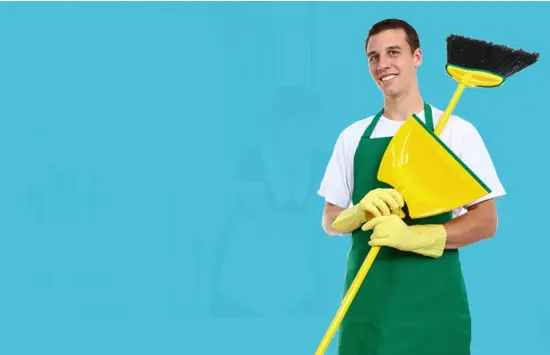
Professional Cleaning Services in Brisbane
book now
Recent Posts
-
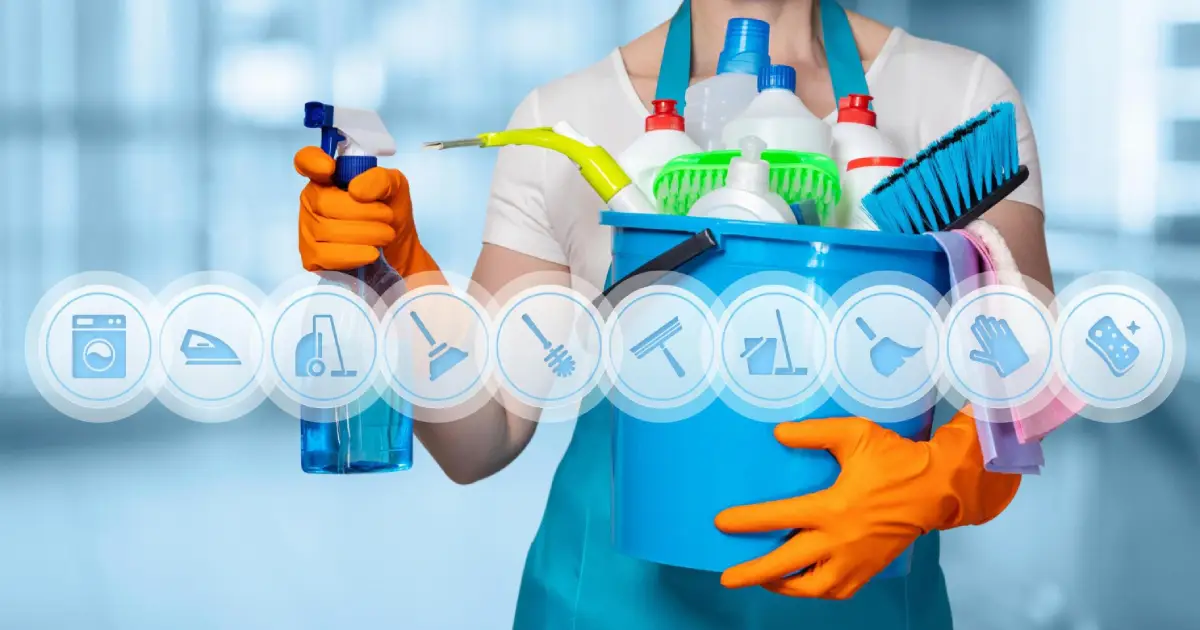
Top 10 Bond Cleaning Tips to Ensure You Get Your Full Deposit Back
January 18, 2024
Admin
-
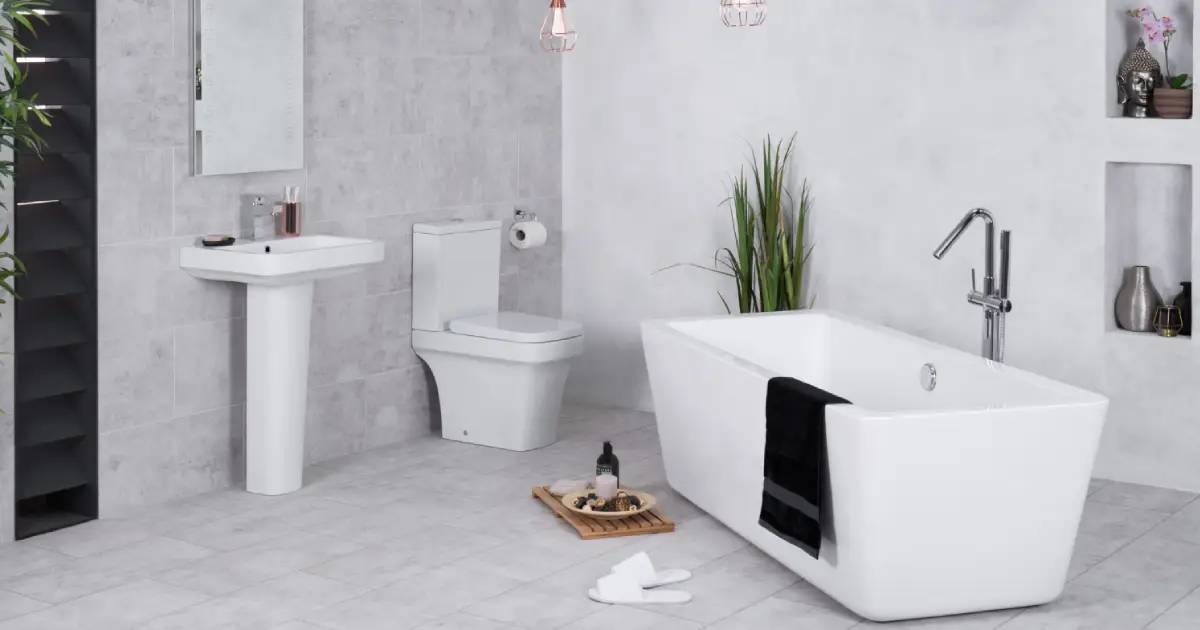
The Ultimate Guide to Getting Rid of Bathroom Odors
December 30, 2023
Admin
-

Renter's Guide to End-of-Lease Cleaning: Scrubbing Away Stress!
December 28, 2023
Admin
-
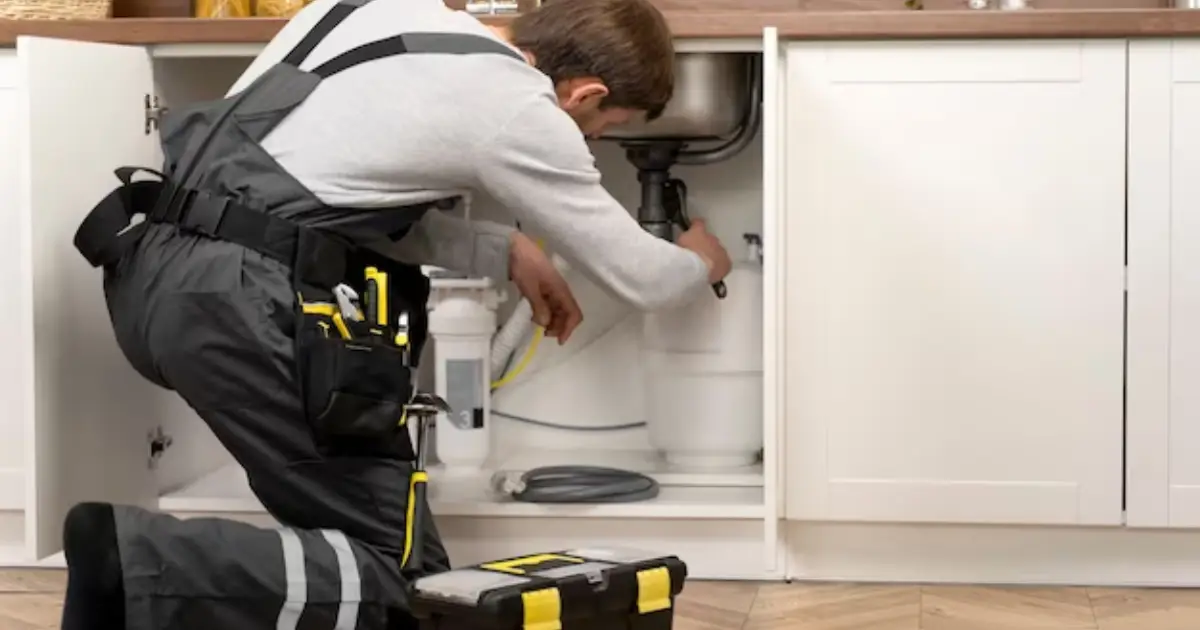
How to Eliminate Drain Flies
December 04, 2023
Admin
-

A Comprehensive Guide to Polishing Tiles
December 04, 2023
Admin
-
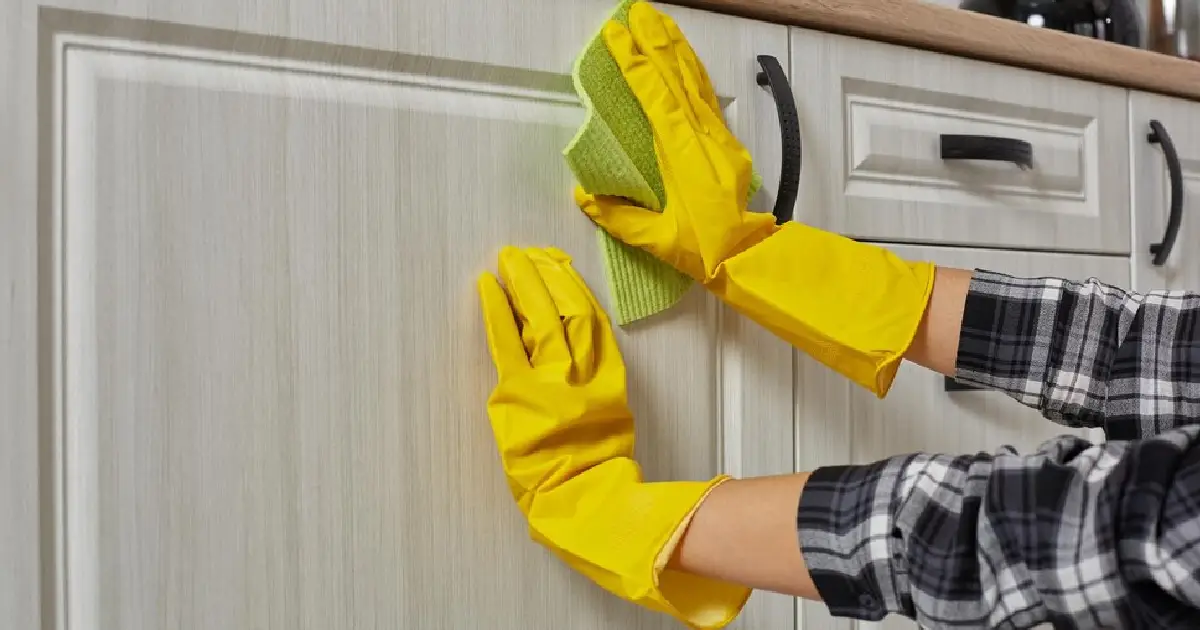
Why Do Your Cabinets Need More Attention Than You Think?
November 16, 2023
Admin
-
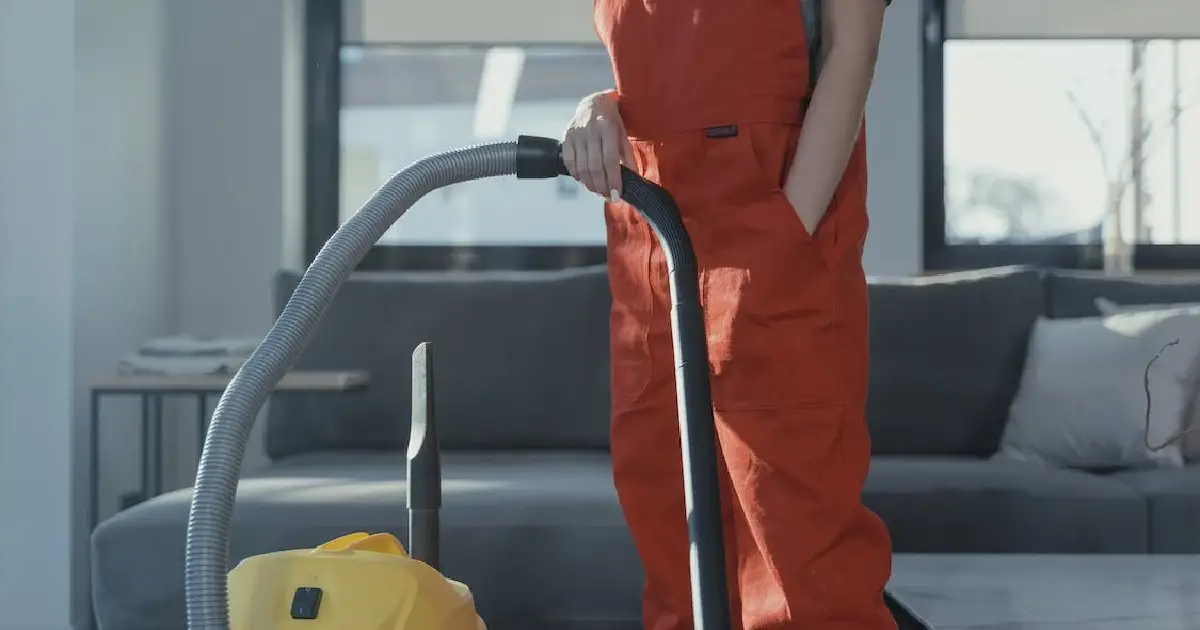
Are Upholstery Cleaners Worth It?
October 30, 2023
Admin
-

The Ultimate Winter Cleaning Checklist For Your Home
August 03, 2023
Admin
-
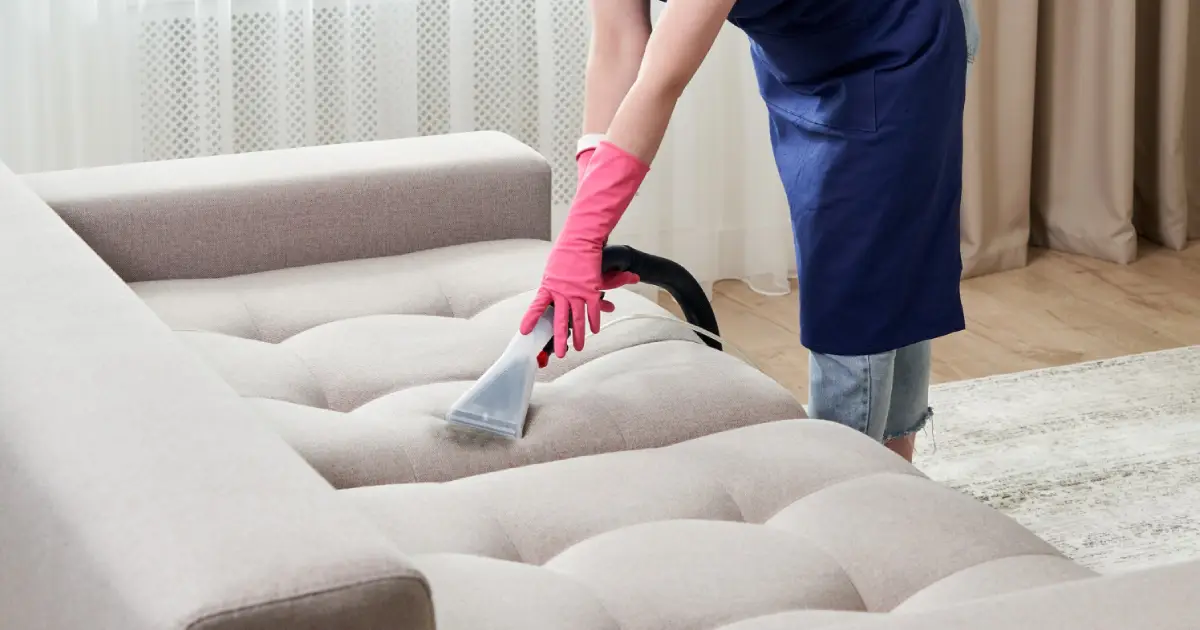
Winter Care: Effective Upholstery Cleaning
July 31, 2023
Admin
-
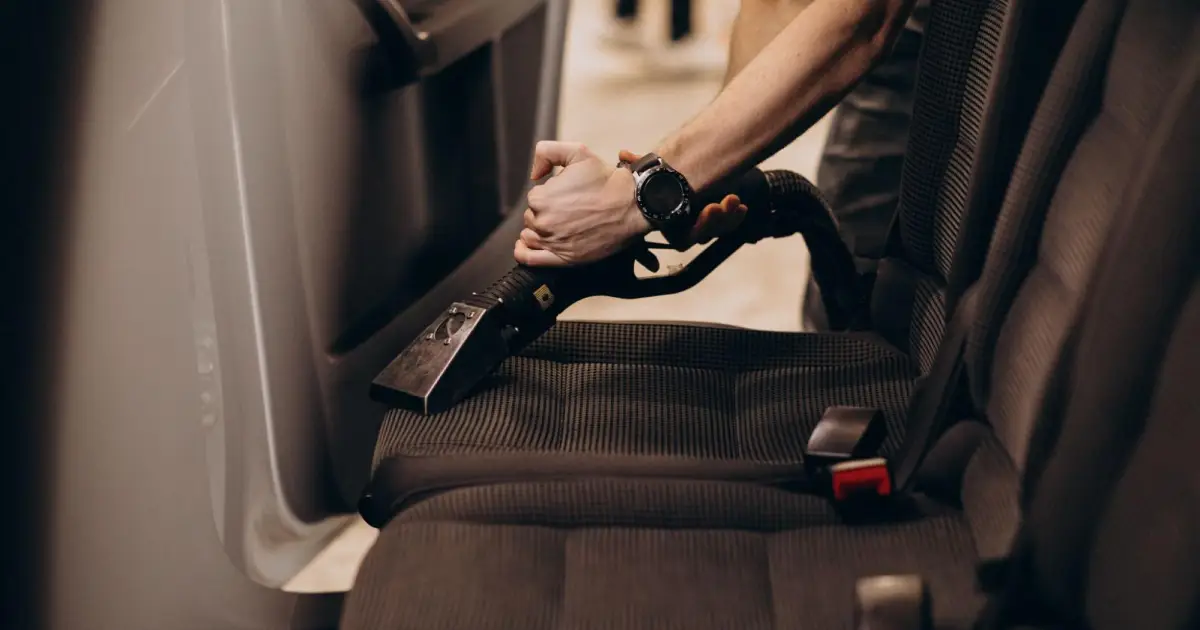
Ten Tips For Carrying Out Your Own Car Maintenance
March 24, 2023
Admin
-
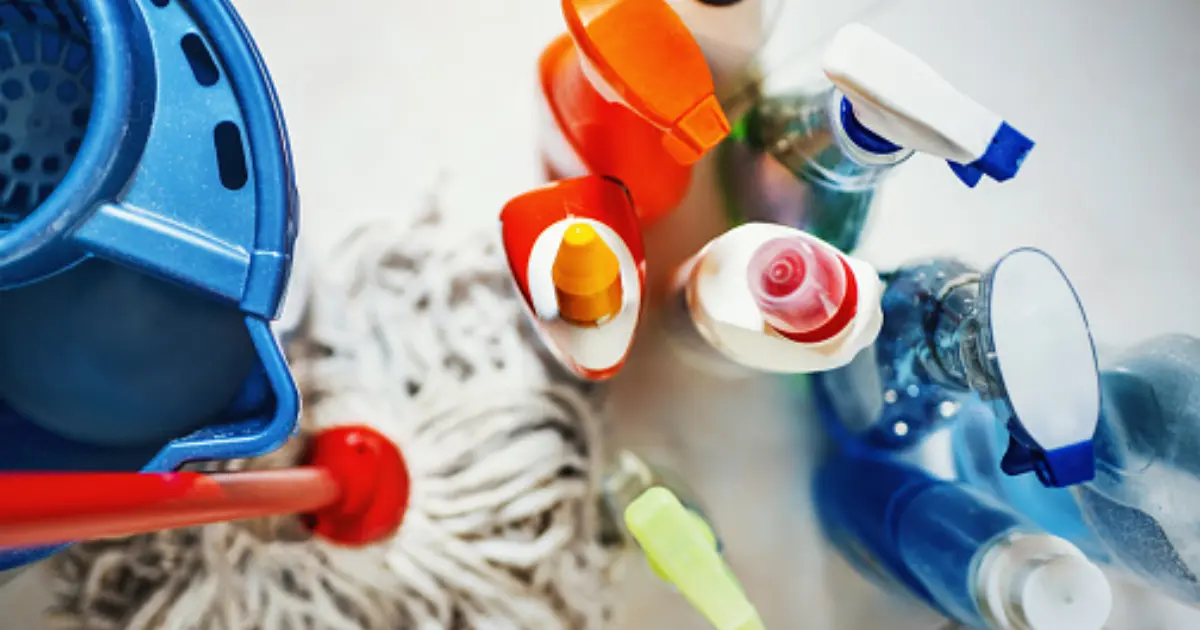
7 Tips for Cleaning Hard-to-Reach Areas in Your Home
March 02, 2023
Admin
-
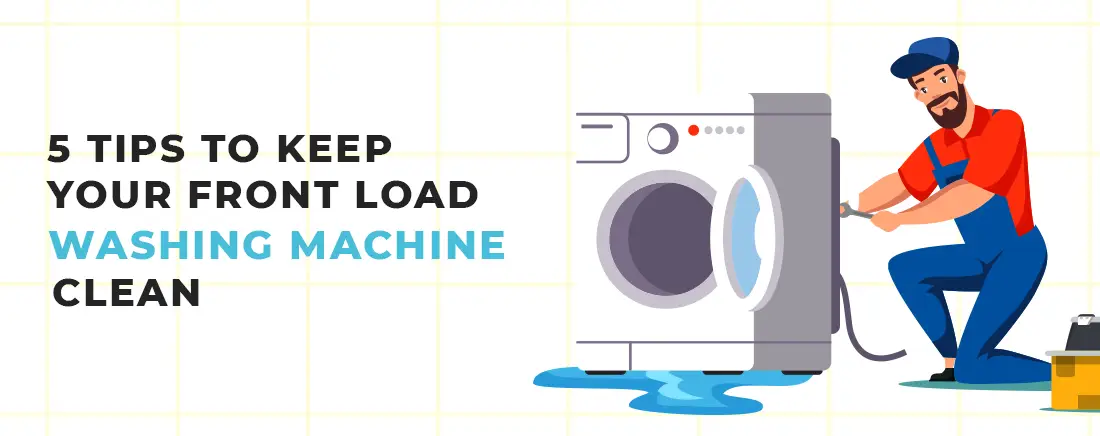
5 Tips To Keep Your Front Load Washing Machine Clean
May 31, 2022
Admin
-
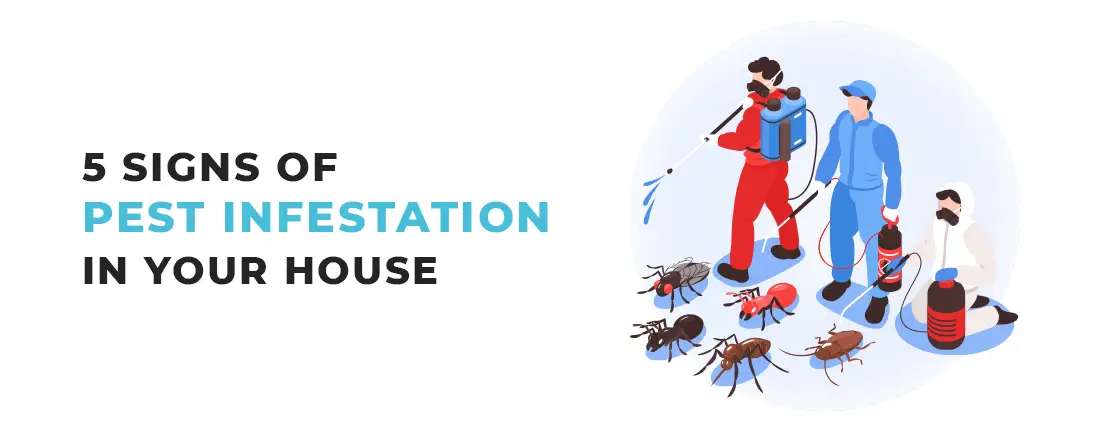
5 Signs Of Pest Infestation In Your House
May 27, 2022
Admin




